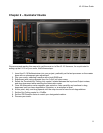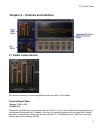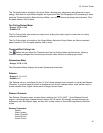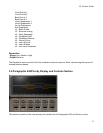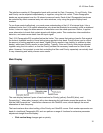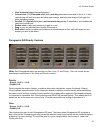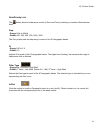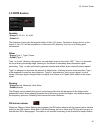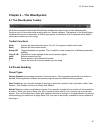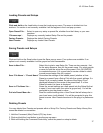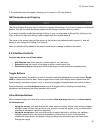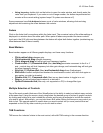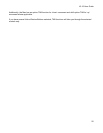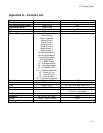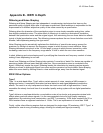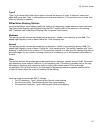L3-16 User Guide
22
Appendix B - IDR In Depth
Dithering and Noise Shaping
Dithering and Noise Shaping are two independent, complementary techniques that improve the
perceived quality of digital audio after it has been re-quantized. Each technique is responsible for the
improvement of a different subjective quality of the noise caused by re-quantization.
Dithering alters the character of the quantization noise to more closely resemble analog hiss, rather
than digital quantization noise. The main effect of dithering is to reduce or eliminate all correlation
between the quantization noise and the original signal, thus minimizing the non-linear distortion effects
typical of digital quantization noise. The dithering process replaces the non-linear distortion sound with
steadier, less displeasing analog-hiss type noise.
Noise Shaping psycho-acoustically optimizes the distribution of overall noise energy across the
spectrum, by taking into account the frequency ranges to which the ear is most sensitive. Noise
Shaping decreases noise level in the 1-6 kHz range, a range to which the ear is sensitive, while
increasing noise level in the frequency range above 15 kHz to which the ear is less sensitive.
In short, dithering and noise shaping work by modifying the character and frequency content of noise,
making it less displeasing to our ears.
Here’s how Dithering and Noise Shaping help maintain 3 more bits of detail: Our brains are capable of
perceiving details that are lower than the noise floor. Since quantization noise is correlated to the
signal, it effectively masks the signal. Dithering breaks this correlation by inserting random signals,
allowing our brain to distinguish signal from noise and thus perceive low level details. Noise shaping
adds even more detail by shifting noise to a less audible range, away from the desired signal.
IDR Dither Options
Type1
Type 1 is a wide-band dither. Type1 adds a certain amount of noise, causing a 5dB increase in
background noise. It completely eliminates low-level distortion and signal-dependent modulation
effects. The result is a very transparent and clean low-level sound with a high resolution. It most
resembles the steady low-level hiss of an excellent quality analog system with no digital quantization
noise.
Type1 delivers no nonlinear distortion or modulation noise at low levels, and generates minimal side
effects when used with stereo signals. It is the recommended choice for high quality mastering
applications. By combining level maximization and IDR™ processing, 16-bit audio created from 20 or
24-bit masters have an apparent resolution of 19 bits. This is an improvement of more than 18dB.
Finally, unlike other dithering engines that are designed for single-stage CD mastering, IDR™ Type 1 is
optimized for use at every processing stage, allowing for subsequent signal processing.



